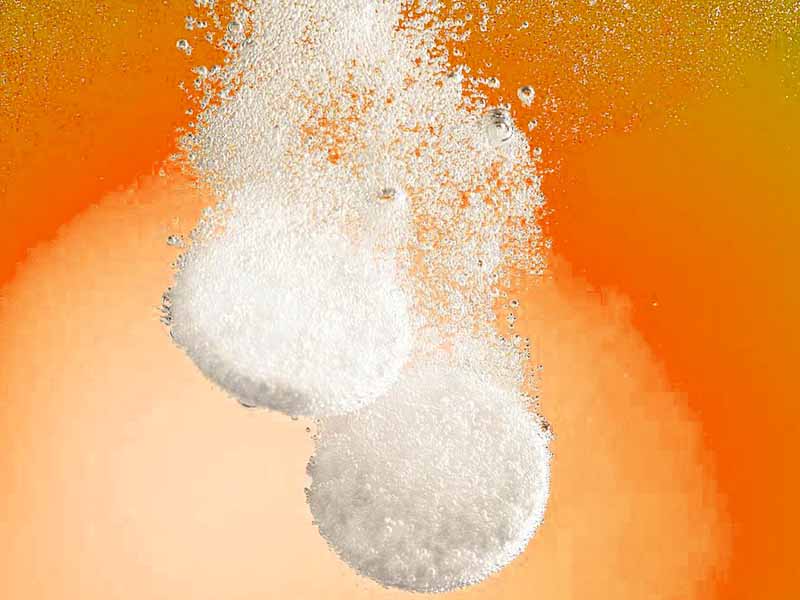Effervescent tablets are uncoated tablet formulations comprising medicinal agent mixes with acid compounds and carbonates that quickly react in the water presence to produce CO2. They are solid dosage forms that must be solubilized or mixed in a cup of water before being administered.
Effervescent tablets contain unique properties that enable for the quick adsorption and dissolving of the desired medication.
The emergence of particles (CO2) from a liquid as an outcome of a chemical reaction between acids and bases is known as effervescence. When the acid and carbonate elements are combined in water, even when using a tiny portion of catalytic agent, the reaction is conducted spontaneously. Since water is one of the reactive species, it will speed up the rate of the reaction, making it hard to terminate.
Among the medications available in effervescent dose forms are:
- Tablets or powders that are difficult to be digested by the stomach
The most common type of calcium, calcium carbonate, is a classic example. Calcium carbonate breaks in gastric acid and is transported into the gastrointestinal tract for assimilation in a typical tablet or powder. Moreover, as the calcium carbonate breaks, it produces co2, leading in stomach gas. On the other hand side, as people grow older, their stomach acid decreases, and a calcium carbonate pill may pass through the stomach without breaking. This, in turn, may cause constipation. However, if calcium carbonate is consumed in an effervescent format, the calcium disintegrates in the water and is present for the body’s absorption even without risk of excessive gas in the stomach or constipation.

- Ph sensitive tablets or powders
Because of the low pH(high acid) in the stomach, active substances (such as amino acids and antibiotics) can get damaged, lack action, or stay dormant. Effervescent substances, on the other hand, can buffer the water-active mixture so that the stomach pH rises ( less acidic), preventing the active component from degrading or inactivating. This buffering effect (through carbonation) causes quick emptying of the stomach (typically within 20 minutes), resulting in a brief residence duration of the medication in the stomach. As a result, the active substance is absorbed completely.
- Those vulnerable to light, o2, or moisture
This category includes a wide range of vitamins. Typical effervescent products are formulated less than 0.5% free moisture. To keep that amount and avoid further environmental damage, the formulation’s container should be 0.001-inch-thick aluminum that entirely prevents light, o2, and moisture.
- Those who require a high dose
Effervescent pills can be used for drugs that require a high dose. In a single dose, a typical effervescent tablet (1 inch in diameter, 5 grams total weight) can contain more than 2,000 mg of water-soluble active components. If the desired dose is greater, the powder form is a frequent method of administration.
- Excipients used in the production of effervescent tablets/Effervescent tablet components
- Acid Substances
- Alkali substances
- Binders
- Lubricants
Why choosing SENIEER?
Senieer, a leading global producer and supplier of pharmaceutical equipment including tablet coating machines , provides ONE STOP SOLUTION. Senieer is the premier global partner for companies in the pharmaceutical, food, chemical, and cosmetics industries. In China, Senieer has mostly concentrated on solid dosage forms for over 34 years. Integrated process solutions that are dependable. We manufacture equipment in accordance with global standards such as GMP, cGMP, and the US FDA.
Senieer technical team members improve one-stop solution services for comprehensive projects, from consulting to design. We completely meet your method and needs for resolving all of your problems.